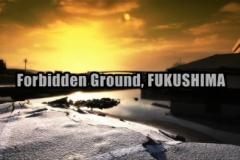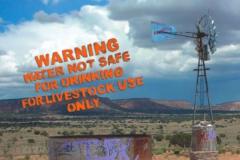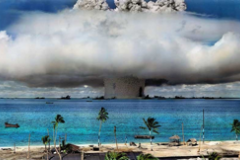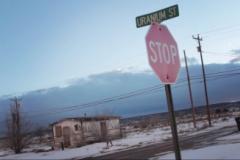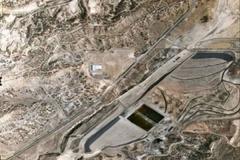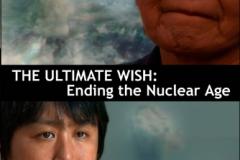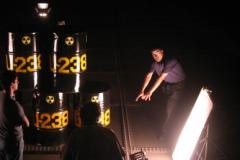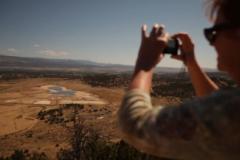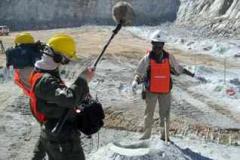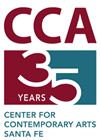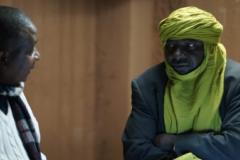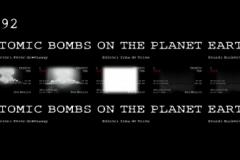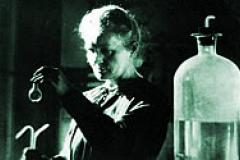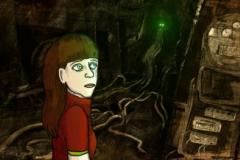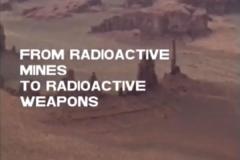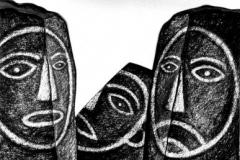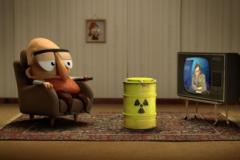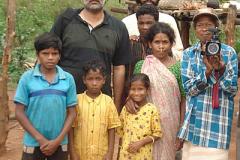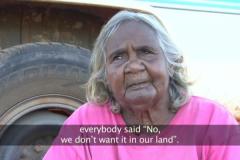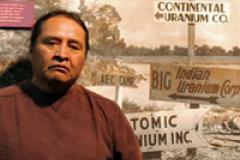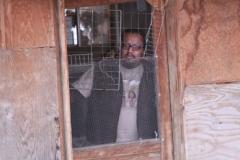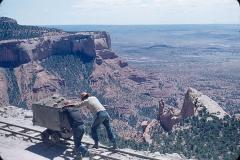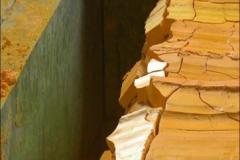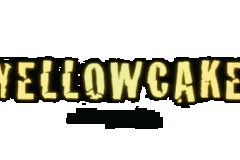ALBUQUERQUE - NOV. 27 TO 28
Guild Cinema, Albuquerque
3405 Central Avenue NE Albuquerque, NM - (505) 255-1848
$5 students with ids / $7 general per block of movies or features
Germany, 2012, 4 min, no dialogue
Animation
World Premiere
Animated short film about Fukushima children who can't play outside. About their dreams and realities.
Bachelor in 2012 of Shoko Hara and Paul Brenner
Sound design and Music: Lorenz Schimpf
Teachers: Prof. Klaus Birk, Alexander Hanowski, Martin Hesselmeier
DHBW Ravensburg, Studiengang Mediendesign
Director Paul Brenner present, Munich 2013
Japan, 2012, 65 min, English subtitles
World Premiere
A documentary that captures everyday life at a special nursing home for elderly atomic bombing survivors over the course of two years. Its director is Sakaguchi Katsumi, who has received high praise for his works such as "Sleep" (Nemuriyusurika). A facility for aged atomic bombing survivors exists in Nagasaki City called the Meguminooka Nagasaki Genbaku Home (Grace hill Nagasaki atom bomb home). To pass on their knowledge, the residents themselves put on plays based on their own experiences of the atomic bombing of Nagasaki for children who visit the home. This documentary sheds light on these atomic bombing victims as they struggle with the pain they bear and live with fierce determination.
(Atomny Ivan)
Russia, 2012, 91 min, Russian, English subtitles
Production: Telesto Film Company
Romantic Comedy
That is a plane story of people from the future which is getting to be real nowadays. The heroes are beautiful and helpless, but they continue to fight for their own happiness and purport. The story takes place in the town where the nuclear engineer may live in one apartment with his mother, the nuclear engineer and his grand-mother – the pioneer of nuclear industry. The story is really outstanding, it is about Ivan and Tania, Tania is interested in her science carrier and Ivan is not interested in anything, but Tania. The new third hero makes heroes to wake up. A lyrical comedy.
Producer Victoria Gromik present, Munich 2013
Japan, 2012, 57 min, Japanese, English subtitles
Documentary
World Premiere
It is a documentary on the aftermath of the disaster in Fukushima.
Someone said "Fukushima, it's like a parallel world". It's another world. Apparently, from the outside, everything looks normal. Outside the exclusion zone of 20km, life continues as before, but not quite, this is only an appearance. The danger is invisible. My challenge is: how to make visible what is invisible.
États-Unis | 2012 | 37 min | Documentaire,
Réalisateurs: Deborah Begel et David Lindblom, Executive | Producteurs:
Dr. Johnnye Lewis et Chris Shuey.
Version originale : Navajo & anglais | Sous-titres : anglais Ce documentaire est une méditation en quatre parties sur les problèmes du peuple Navajo avec l’eau potable contaminée. Près d’une personne sur trois de la nation Navajo lutte sur cette question.
Quatre articles sur l’eau débutent avec une multitude de gens qui révèlent l’ampleur des problèmes de contamination de l’eau sur les terres Navajo, des problèmes de santé qui ont probablement été causés par les résidus d’uranium laissé sur l’eau comme «un élément
spirituel» au fait que 30% des Navajo n’ont pas accès à l’eau potable.
États-Unis | 2012 | 87 min, Documentaire.
Réalisateur : Adam Jonas Horowitz.
Version originale : Anglaise | Sous-titres: français.
Issu de documents récemment déclassifiés du gouvernement américain, ce documentaire présente le témoignage des survivants, et des images d’archives jamais vues. Nuclear Savage découvre l’un des chapitres les plus troublants de l’histoire américaine moderne ; comment les habitants des îles Marshall, considérés comme une culture civilisée, ont été délibérément utilisés comme cobayes humains pour étudier les effets des retombées nucléaires. Entre 1946 et 1958 les États-Unis ont testé 67 armes nucléaires au-dessus du sol, sur ou près des îles Bikini et Enewetok atolls. La bombe à hydrogène est 1000 fois plus puissante que la bombe d’Hiroshima. Des Îles entières ont été vaporisées et les îles habitées ont été recouvertes par les retombées. Les gens fortement exposés de Rongelap ont ensuite été inscrits comme des sujets humains dans le top-secret Project 4.1 et évacués vers une île fortement contaminée pour étudier les effets de la consommation d’aliments radioactifs pendant près de 30 ans. Beaucoup d’habitants des îles Marshall ont développé des cancers et ont eu des enfants qui étaient mort-nés ou avec des malformations congénitales graves.
Nuclear Savage suit les insulaires dans leur lutte pour la justice et la reconnaissance de ce qui leurs a été fait. Malgré les récentes révélations, le gouvernement américain continue de nier que les insulaires ont été délibérément utilisés comme cobayes humains. Le film soulève des questions troublantes sur le racisme, l’obligation morale du gouvernement américain pour les habitants des îles Marshall, et pour quelle raison le gouvernement continue de cacher les tests du Project 4.1 après plusieurs décennies.
Prix
AUDIENCE AWARD, Best Film Cinema Planeta International Festival, Mexico
JURY PRIZE, Best Feature Documentaire, Paris/FIFE International Festival of Environmental Films
JURY PRIZE, Chicago Peace on Earth Film Festival
YELLOW OSCAR, Best Feature Documentaire, International Uranium Film Festival Rio 2013
USA, 2012, 12 min, English
Documentary
Just outside Grants, New Mexico, is a 200-acre heap of toxic uranium waste, known as tailings. After 30 years of failed cleanup, the waste has deeply contaminated the air and water near the former uranium capital of the world. TAILINGS is a cinematic investigation into the pile that is gravely shaping the lives of those who are stuck living in its shadow.
TRAILER: http://tailingsfilm.com
TAILINGS won the Best New Mexico Short Award of the Santa Fe Independent Film Festival.
USA, 2011, 92 min, English
In 2010, the United States announced the first new nuclear power plant construction in over 32 years. The "Nuclear Renaissance" was born, and American's long stared expasion of nuclear energy was infused with new life.
USA, 45 min
Director's Comments after the film
This illuminating film documents the largest radioactive waste spill in U.S. history - a national tragedy that received little attention. With the sound of a thunderclap, 94 million gallons of water contaminated with uranium mining waste broke through a United Nuclear Corporation storage dam in 1979. The water poured into the Puerco River in New Mexico - the main water supply for the Navajo Indians that live along the river, and a tributary of the major source of water for L.A. Navajo ranchers, their children, and farm animals waded through the river unaware of the danger.
The River That Harms tells the story of this tragedy and the toll it continues to take on the Navajos, who lost the use of their water. To the Navajos, this event is also a prophetic warning for all humanity.
USA, 2012,40 min, English/Japanese/French, English subtitles
Co-production Kathleen Sullivan
Documentary
Moving, unforgettable living witnesses who survived two of the world's most momentous radiation crises: Nagasaki in 1945 and Fukushima in 2011.
They are interlaced with nuclear experts and archival footage, some shocking, illuminating the largely unrecognized connection between nuclear weapons and nuclear power, and the growing global movements to abolish both.
The documentary is both a tragic and an inspirational example of courageous women in the face of environmental catastrophes and an alert to everyone today about the dangers of continued nuclear proliferation and nuclear power.
http://richtervideos.com/TheUltimateWish/
Director will be present (New York 2014)
(Uranio 238: La Bomba Sucia del Pentágono)
Costa Rica, 2009, 28 min, English, Spanish subtitles
Producer Isabel Macdonald and San José Quaker Peace Center
Documentary
Uranium 238 depicts the hazards that the use of depleted uranium or DU in conventional weapons poses for the health of soldiers and civilians. Through interviews with soldiers, scientists and activists, the documentary explores the health hazards when this radioactive and toxic material is ingested or inhaled by people in the battle fields and shooting ranges. Based in scientific data this video has been used by the International Coalition to Ban Uranium Weapons (ICBUW) as part of its international campaign to prohibit DU as a military component.
URANIUM 238 - The Pentagon´s Dirty Pool won the Jury Award as the Best Short Film of the First International Uranium Film Festival 2011.
USA, 2012, 70 min
Production: Reelthing
The promise of jobs from a proposed uranium mill has an economically devastated mining community in Colorado hopeful for the first time in decades. When environmentalists step in to stop the mill, pro-mill advocates are enraged. A debate ensues, pitting jobs against health and the environment.
Without judgment, both sides of the issue are brought to life in heart-wrenching detail as the film follows conflicting visions for the future. The film offers no easy answers but aims instead to capture personal stories and paint a portrait of the lives behind this nuanced and complex issue.
Site: http://www.uraniumdrivein.com/
Allemagne | 2010-2014 | 35 minutes (version
courte) | Documentaire.
Directeur : Joachim Tschirner.
Version originale : Anglaise.
Il s’agit d’une nouvelle version courte du long métrage documentaire «Yellow Cake. La saleté derrière l’uranium se concentre sur une mine d’uranium secrète en Allemagne de l’est, qui a produit pendant des décennies des «yellow cake» pour les bombes atomiques de l’Union Soviétique. C’était la troisième plus grande mine
d’uranium dans le monde, situé dans les provinces de Saxe et de Thuringe. Fonctionnant jusqu’à la réunification, elle avait le nom de code WISMUT - allemand de bismuth. Le film raconte l’histoire de la Wismut et accompagne depuis plusieurs années la première opération de nettoyage de l’histoire de l’exploitation minière de l’uranium.
Site web du film : www.yellowcake-derfilm.de
Prix
YELLOW OSCAR, Best Short Documentary, International Uranium Film Festival Rio 2014
Note de Réalisateur - « YELLOW CAKE » est le résultat d’un projet qui a débuté en 2002. « The World Uranium Hearing » a eu lieu il y a plus d’une décennie. La déclaration de cette audience est devenu la signification essentielle de mon film : « La radioactivité ne sait rien des différences culturelles ou les frontières politiques. Et dans un monde muté empoisonné par la radioactivité mortelle, il ne sera plus d’importance, si nous séparons nos déchets, conduisons moins de voitures, utiliser un détergent sans phosphate, ou planter un arbre. Nul importe si nous passons notre temps à essayer de sauver les éléphants. Quelle que soit l’action que nous prenons à ce point serait superflue et dépourvue de sens. C’est pourquoi la fin de l’ère atomique doit commencer par le premier maillon de la chaîne de production nucléaire - L’ extraction de l’uranium « Pendant mes recherches, j’ai fait l’expérience que, malgré son caractère explosif, l’exploitation minière de l’uranium fait rarement dans la sensibilisation du public. Le film « Yellow Cake » est ma réaction à cette situation inacceptable. Joachim Tschirner
SANTA FE - NOV. 30 & DEC. 1
Center for Contemporary Arts Cinematheque
1050 Old Pecos Trail
Santa Fe, NM 87505
Phone: 505.982.1338
Email: contact@ccasantafe.org
http://www.ccasantafe.org/events
http://www.ccasantafe.org/cinematheque/show-times
Germany, 2012, 4 min, no dialogue
Animation
World Premiere
Animated short film about Fukushima children who can't play outside. About their dreams and realities.
Bachelor in 2012 of Shoko Hara and Paul Brenner
Sound design and Music: Lorenz Schimpf
Teachers: Prof. Klaus Birk, Alexander Hanowski, Martin Hesselmeier
DHBW Ravensburg, Studiengang Mediendesign
Director Paul Brenner present, Munich 2013
Germany, 2013, 90 min, German
Documentary
The film reveals the hidden agenda of the nuclear industry in Africa and the alarming consequences for people and the environment. In collusion with corrupt governments and questionable business partners energy companies source uranium for their domestic markets. And – faced with an apparent "sales problem" of nuclear technology in the Western world – they also lobby African governments to buy nuclear power plants.
Otherwise well informed high-level decision makers in Africa seem oblivious to the risks of nuclear power. They happily welcome the prospect of a seemingly endless, cheap and clean energy source. And their national pride is fuelled by the fact that the radioactive raw material for the new reactors doesn't need to be imported from other countries – it's hidden in the African soil.
Anti-nuclear activists in Africa are intimidated, persecuted and sometimes killed. In this film, critics of the nuclear industry speak out against the injustice and reveal the dubious activities of nuclear enterprises - from the illegal exploitation of the mines in the Congo to the controversial mining operations in the Sahara region. We travel through the desert on the "Uranium Highway" and show how the current war in Mali is related to fifty years of uranium mining that have destroyed people's livelihoods and pushed them into the hands of Al-Qaeda terrorists.
The film shows the dilemma of the African continent: It desperately needs cheap and reliable electric power for its development - but instead of being able to use its own resources, Africa is forced to sell off its riches to corrupt multinational enterprises. The sobering conclusion: In the future, African governments will need to give up their unrealistic nuclear ambitions and develop appropriate technologies to free themselves from their technological dependence on Western enterprises.
Filmwebsite: www.a-o-buero.de/en/films/filme/datum/2013/05/31/atomic-africa/
Royaume-Uni / Pays-Bas | 2011 | 13 min | Documentaire
expérimental / Art Vidéo
Réalisateur : Peter Greenaway.
Conception de la vidéo : Irma de Vries.
Producteur : Changer Performing Arts.
Version originale : multilingue.
www.changeperformingarts.com
Synopsis : Étonnamment, il y a eu 2 201 bombes atomiques larguées sur la planète de 1945 à 1989. Un nombre étonnant de bombes atomiques impliquant d’énormes ravages environnementaux. Le film montre des preuves de chaque explosion documentée : le pays responsable, la date, le lieu, la force et la hauteur au niveau de la terre ou de la mer, et ce, dans une accumulation incessante de destructions à laf ois grandiose et redoutable.
Prix : International Uranium Film Festival. Prix hors concours, Rio de Janeiro 2012.
« Cette réalisation exceptionnelle nous rappelle quelque chose que nous avons tendance à oublier : 2201 bombes atomiques ont été explosé dans ou sur notre propre planète d’origine - qui, du point de vue de la Terre, ne sont pas des tests atomiques du tout, mais des frappes nucléaires préventives.
Greenway a créé une esthétique cinématographique infernale afin de transmettre cette vérité. Utilisant 25 écrans à la fois, Atomic Bombs on Planet Earth, submerge le champ de vision du spectateur avec des cascades éblouissantes de feu poison accentué par les sons de percussion sonique afin
de transmettre l’énorme imprudence des humains face aux nombreuses bombes explosées il n‘y a pas si longtemps. Avant la fin des explosions, Greenway a livré plus de boules de feu qu’aucun spectateur ne serait en mesure d’absorber - et plus que toute planète vivante peut être en mesure de soutenir. L’explosion de la première Trinité apparaît plusieurs fois lorsque Robert Oppenheimer fournit la voix hors champ du film avec des mots répétés comme un mantra : Certains riaient / certains criaient / la plupart restait silencieux. Ce ne sont guère des paroles de sagesse venant du père de la bombe ... et après demi-siècle, en l’absence de sages mots sur les armes nucléaires, nous obtenons ce qui vient à nous : un documentaire expérimental impossible d’oublier qui déclenche dans notre cerveau collectif une migraine atomique de proportions criminellement aliénées dont les énergies vont plus loin et sont destinées à durer plus longtemps que notre propre ADN. » Robert Del Tredici
USA, 2010, 73 min, English
Documentary
Latin American Premiere
Yellow Oscar Best Feature Film 2012
For much of the twentieth century the United States Department of Defense was a major producer of radioactive waste. The Pentagon not only produced its own nuclear waste. For years, the Pentagon depended on an unknown number of private defense contractors to supply countless radioactive parts and equipment. In the mid-twentieth century, the U.S. government actually gave some of these defense contractors permission to dump radioactive waste on their private properties.
The Pentagon seldom, if ever, disclosed the whereabouts of these dangerous nuclear dumps. The problem becomes one for the ages: many of these radioactive isotopes remain dangerous and "hot" for thousands of years, even as the radiation is invisible to unsuspecting victims.
This carelessness caught up with college students in Lock Haven, Pennsylvania. One day the students woke up to find environmental officials dressed in protective "moonsuits" searching their apartment building for tell-tale signs of radioactive waste.
États-Unis | 2012 | 87 min, Documentaire.
Réalisateur : Adam Jonas Horowitz.
Version originale : Anglaise | Sous-titres: français.
Issu de documents récemment déclassifiés du gouvernement américain, ce documentaire présente le témoignage des survivants, et des images d’archives jamais vues. Nuclear Savage découvre l’un des chapitres les plus troublants de l’histoire américaine moderne ; comment les habitants des îles Marshall, considérés comme une culture civilisée, ont été délibérément utilisés comme cobayes humains pour étudier les effets des retombées nucléaires. Entre 1946 et 1958 les États-Unis ont testé 67 armes nucléaires au-dessus du sol, sur ou près des îles Bikini et Enewetok atolls. La bombe à hydrogène est 1000 fois plus puissante que la bombe d’Hiroshima. Des Îles entières ont été vaporisées et les îles habitées ont été recouvertes par les retombées. Les gens fortement exposés de Rongelap ont ensuite été inscrits comme des sujets humains dans le top-secret Project 4.1 et évacués vers une île fortement contaminée pour étudier les effets de la consommation d’aliments radioactifs pendant près de 30 ans. Beaucoup d’habitants des îles Marshall ont développé des cancers et ont eu des enfants qui étaient mort-nés ou avec des malformations congénitales graves.
Nuclear Savage suit les insulaires dans leur lutte pour la justice et la reconnaissance de ce qui leurs a été fait. Malgré les récentes révélations, le gouvernement américain continue de nier que les insulaires ont été délibérément utilisés comme cobayes humains. Le film soulève des questions troublantes sur le racisme, l’obligation morale du gouvernement américain pour les habitants des îles Marshall, et pour quelle raison le gouvernement continue de cacher les tests du Project 4.1 après plusieurs décennies.
Prix
AUDIENCE AWARD, Best Film Cinema Planeta International Festival, Mexico
JURY PRIZE, Best Feature Documentaire, Paris/FIFE International Festival of Environmental Films
JURY PRIZE, Chicago Peace on Earth Film Festival
YELLOW OSCAR, Best Feature Documentaire, International Uranium Film Festival Rio 2013
USA, 2011, 17 min, English subtitles
Experimental
Twelve fictional time-travelers explore the post-atomic age American West, when they discovered the abandoned tunnels beneath Yucca Mountain Radioactive Waste Repository, in this sixteen-minute long Experimental SciFiction Punk Western.
WINDOW ROCK - DEC. 2 TO 4
Navajo Nation Museum
Highway 264 and Loop Road
Phone: +1.928.871.7941
Email: info@navajonationmuseum.org
http://www.navajonationmuseum.org/
1050 Old Pecos Trail
Santa Fe, NM 87505
Phone: 505.982.1338
Email: contact@ccasantafe.org
http://www.ccasantafe.org/events
http://www.ccasantafe.org/cinematheque/show-times
Germany, 2012, 4 min, no dialogue
Animation
World Premiere
Animated short film about Fukushima children who can't play outside. About their dreams and realities.
Bachelor in 2012 of Shoko Hara and Paul Brenner
Sound design and Music: Lorenz Schimpf
Teachers: Prof. Klaus Birk, Alexander Hanowski, Martin Hesselmeier
DHBW Ravensburg, Studiengang Mediendesign
Director Paul Brenner present, Munich 2013
Australia, 2005, 62 min, English
Production: Frontline Film Foundation
Documentary
Latin American Premiere
Blowin' in the Wind examines the secret treaty that allows the US military to train and test its weaponry on Australian soil. It looks at the impact of recycled uranium weapons and the far-reaching physical and moral effects on every Australian. The film's release has been timely as the government currently moves to approve more uranium mines while arguing the contrary - that by going nuclear we are being both 'safe' and 'green'. The film reveals that Iraqi babies are now being born with major birth defects. Bradbury wonders whether Australians living downwind from the military testing ranges will be next. He argues that we were lied to by the British over the Woomera and Maralinga atomic tests. Can we trust another equally powerful partner in our 'war on terror'?
With a cash budget of just $12,000 the film raises pertinent questions which cannot be ignored by the Australian public. The film shocked, angered and surprised large audiences when shown at the Sydney and Brisbane Film Festivals.
www.frontlinefilms.com.au/videos/blowin.htm
Germany, 2013, 10 min, English
World Premiere
Behind the power outlet in her room the little girl discovers a futuristic fairground run by the nuclear energy industry. Soon her fascination turns into horror. There is no way back, the catastrophe is near. The Fukushima nuclear accident is blueprint for the story: a society, confronted with the sudden disaster, acting like headless chicken - those responsible send their apologies.
Realisation: Ilinca Höpfner, Helge Henning
Narrator: Nick Cave
Soundediting: Sid Gautama
Producer: Ingmar Böschen
Germany 2013
États-Unis | 2012 | 37 min | Documentaire,
Réalisateurs: Deborah Begel et David Lindblom, Executive | Producteurs:
Dr. Johnnye Lewis et Chris Shuey.
Version originale : Navajo & anglais | Sous-titres : anglais Ce documentaire est une méditation en quatre parties sur les problèmes du peuple Navajo avec l’eau potable contaminée. Près d’une personne sur trois de la nation Navajo lutte sur cette question.
Quatre articles sur l’eau débutent avec une multitude de gens qui révèlent l’ampleur des problèmes de contamination de l’eau sur les terres Navajo, des problèmes de santé qui ont probablement été causés par les résidus d’uranium laissé sur l’eau comme «un élément
spirituel» au fait que 30% des Navajo n’ont pas accès à l’eau potable.
USA, 1999, 25 min
Co- Producers / Directors / Writers (with Anna Rondan)
This film chronicles how three large communities of people are effected by uranium's cycle of destruction: the Navajo uranium miners of the American Southwest. They mined for uranium that led to a cancer epidemic which also affects the surrounding communities. The Gulf War Veterans, and today's exposed troops affected by depleted uranium residue in Iraq, and the Iraqi people and environment against whom Depleted Uranium bullets and shells are used. Evidence released here shows that the continued presence of U-238 was being measured in the urine of war veterans 8-9 years after the Gulf war.
États-Unis | 1997 | 9 min | Animation
Réalisateur: Karen AQUA (1954 - May 30th, 2011) /
Musique par Ken Field
Version originale : Aucun dialogue
Synopsis : Dans le sud du centre du Nouveau-Mexique, un ancien site d’art rupestre amérindien est situé à 35 miles du site de l’explosion de la première bombe atomique de l’histoire. La juxtaposition de ces deux sites apporte un contraste frappant entre les deux mondes qui les ont créés ; celui qui vénère et vit en harmonie avec le monde naturel, et qui, en s’efforçant de contrôler les forces de la nature, a créé, une arme pour sa destruction.
Le site Web de Réalisateur : http://karenaqua.com
Prix
Humboldt International Film Festival, CA, 1998: 1st Prize, Animation
Marin County National Festival of Short Films, CA, 1998: 1st Prize, Animation
Green Extreme Film Festival, Canada, 1999: Best Environmental Film
Prix Leonardo, Italy, 1999: Gold Certificate
International Uranium Film Festival SPECIAL ACHIEVEMENT AWARD 2012
(Herr Hoppe und der Atommüll)
Germany, 2011, 4 min
Producer Filmakademie Baden – Württemberg
Animation
A barrel of nuclear waste drops into the living room of Herr Hoppe an average suburbian German. He has to get rid of it and does it in his own wacky way.
India | 2009 | 9 min | Documentary
Director: Shri Prakash | Original Language: English
Jadugoda is an area in the state of Bihar populated by the indigenous Adivasi people. It first came into prominence when uranium deposits were discovered in the area, since Jadugoda is India's only underground uranium mine. The film documents the devastating effects of uranium mining by Uranium Corporation of
India Limited in Jadugoda. For the last thirty years, the radioactive wastes have been just dumped into the rice fields of the Adivasis. Film website: http://shriprakash.com/films/jaadugoda-the-black-magic/
Australia, 2010, 10 min
Documentary
Muckaty Voices is a short film capturing Aboriginal community resistance to an Australian government plan to dump low and long lived intermediate level radioactive waste at Muckaty Station, 120km north of Tennant Creek in the Northern Territory. The government's push for Muckaty has sparked widespread criticism from the targeted community, trade unions, national health and environment groups and Indigenous organizations. A federal court challenge has been launched to contest the Muckaty nomination. The film presents the country and community affected by this proposal.
The film was produced for the Muckaty Traditional Owners by Enlightning Productions, with support of Beyond Nuclear Initiative: www.beyondnuclearinitiative.com
États-Unis | 2012 | 87 min, Documentaire.
Réalisateur : Adam Jonas Horowitz.
Version originale : Anglaise | Sous-titres: français.
Issu de documents récemment déclassifiés du gouvernement américain, ce documentaire présente le témoignage des survivants, et des images d’archives jamais vues. Nuclear Savage découvre l’un des chapitres les plus troublants de l’histoire américaine moderne ; comment les habitants des îles Marshall, considérés comme une culture civilisée, ont été délibérément utilisés comme cobayes humains pour étudier les effets des retombées nucléaires. Entre 1946 et 1958 les États-Unis ont testé 67 armes nucléaires au-dessus du sol, sur ou près des îles Bikini et Enewetok atolls. La bombe à hydrogène est 1000 fois plus puissante que la bombe d’Hiroshima. Des Îles entières ont été vaporisées et les îles habitées ont été recouvertes par les retombées. Les gens fortement exposés de Rongelap ont ensuite été inscrits comme des sujets humains dans le top-secret Project 4.1 et évacués vers une île fortement contaminée pour étudier les effets de la consommation d’aliments radioactifs pendant près de 30 ans. Beaucoup d’habitants des îles Marshall ont développé des cancers et ont eu des enfants qui étaient mort-nés ou avec des malformations congénitales graves.
Nuclear Savage suit les insulaires dans leur lutte pour la justice et la reconnaissance de ce qui leurs a été fait. Malgré les récentes révélations, le gouvernement américain continue de nier que les insulaires ont été délibérément utilisés comme cobayes humains. Le film soulève des questions troublantes sur le racisme, l’obligation morale du gouvernement américain pour les habitants des îles Marshall, et pour quelle raison le gouvernement continue de cacher les tests du Project 4.1 après plusieurs décennies.
Prix
AUDIENCE AWARD, Best Film Cinema Planeta International Festival, Mexico
JURY PRIZE, Best Feature Documentaire, Paris/FIFE International Festival of Environmental Films
JURY PRIZE, Chicago Peace on Earth Film Festival
YELLOW OSCAR, Best Feature Documentaire, International Uranium Film Festival Rio 2013
USA, 2007, 37 min
Director: Jenny Pond, produced by Norman Patrick Brown & Jenny Pond.
Advisor: Manuel Pino, Recipient of the Nuclear Free
The film tells the story of a corrupt government, unconscionable greed and a policy of destruction aimed at the Aboriginal Homelands of Indigenous People from the 1940's until today. It is a documentary about uranium mining and the devastating effect it has on the people, livestock, water and agriculture in the 4 Corners area of the US and the Grand Canyon. The path of POISON WIND has taken us to political and environmental activists within the Navajo Nation (Diné) and Pueblo People (Acoma and Laguna) of New Mexico, Western Shoshone, Hualapai and Havasupai where today many people suffer relentlessly from the effects of living near radiation contaminated lands. POISON WIND highlights the greed of mining companies that set out to destroy the balance of life created by the people of these lands...sacred to so many and offering only a death sentence in the end. This film is a "Visual Oral History" which comes from the people themselves and only serves to focus on their stories, as they speak from their hearts about how uranium mining left them victims of where they live.
Future Award 2008
Info: Poisonwindmovie.wordpress.com
USA, 2011, 30 min, English
Producer: Yvonne Latty
Documentary
Latin American Premiere
"Sacred Poison" is a 30-minute documentary that brings viewers into the pain and devastation that uranium mining brought into the lives of too many Navajo. It is a moving documentary whose power is in the voices and the people that we meet. It is raw and intimate, and I use what I learned from years of reporting, my journalism, to bring their stories to life. The usually reserved Navajo reveal the pain and struggle of living life where the amount of clean water you have to drink is very limited, where one family lost seven children to uranium contamination, where various forms of cancer seem to live inside so many neighbors.
TRAILER
http://sacredpoison.com
USA, 2012, 12 min, English
Documentary
Just outside Grants, New Mexico, is a 200-acre heap of toxic uranium waste, known as tailings. After 30 years of failed cleanup, the waste has deeply contaminated the air and water near the former uranium capital of the world. TAILINGS is a cinematic investigation into the pile that is gravely shaping the lives of those who are stuck living in its shadow.
TRAILER: http://tailingsfilm.com
TAILINGS won the Best New Mexico Short Award of the Santa Fe Independent Film Festival.
USA, 2011, 92 min, English
In 2010, the United States announced the first new nuclear power plant construction in over 32 years. The "Nuclear Renaissance" was born, and American's long stared expasion of nuclear energy was infused with new life.
USA, 1983, 58 min, English
Production: Sacred Land Film Project
The Four Corners: A National Sacrifice Area? Examines the cultural and environmental impasse of energy development in Arizona, New Mexico, Colorado and Utah. The film takes its title from a National Academy of Sciences report that concluded that strip-mining in the arid Colorado Plateau could permanently damage the land, creating a "national sacrifice area." Four Corners explores the hidden costs of uranium mining and milling, coal strip-mining and oil shale extraction in the "Golden Circle of National Parks" – the homeland of Hopi, Navajo and Mormon cultures.
USA, 45 min
Director's Comments after the film
This illuminating film documents the largest radioactive waste spill in U.S. history - a national tragedy that received little attention. With the sound of a thunderclap, 94 million gallons of water contaminated with uranium mining waste broke through a United Nuclear Corporation storage dam in 1979. The water poured into the Puerco River in New Mexico - the main water supply for the Navajo Indians that live along the river, and a tributary of the major source of water for L.A. Navajo ranchers, their children, and farm animals waded through the river unaware of the danger.
The River That Harms tells the story of this tragedy and the toll it continues to take on the Navajos, who lost the use of their water. To the Navajos, this event is also a prophetic warning for all humanity.
USA, 2012,40 min, English/Japanese/French, English subtitles
Co-production Kathleen Sullivan
Documentary
Moving, unforgettable living witnesses who survived two of the world's most momentous radiation crises: Nagasaki in 1945 and Fukushima in 2011.
They are interlaced with nuclear experts and archival footage, some shocking, illuminating the largely unrecognized connection between nuclear weapons and nuclear power, and the growing global movements to abolish both.
The documentary is both a tragic and an inspirational example of courageous women in the face of environmental catastrophes and an alert to everyone today about the dangers of continued nuclear proliferation and nuclear power.
http://richtervideos.com/TheUltimateWish/
Director will be present (New York 2014)
USA, 2010, 11 min
Executive Productions: First Nations Development Institute, Seventh Generation Fund, Western Action Mining Network, Navajo Waters
Documentary
The waters and health of Native and non-Native communities near the Grand Canyon and across the Southwest have been contaminated by decades of uranium mining and milling. Today, thousands of new uranium mining claims have been filed on the Colorado River Watershed, and directly threaten the water supplies of 25 million people. Join us in a conversation to help us understand more about Uranium.
(Uranio 238: La Bomba Sucia del Pentágono)
Costa Rica, 2009, 28 min, English, Spanish subtitles
Producer Isabel Macdonald and San José Quaker Peace Center
Documentary
Uranium 238 depicts the hazards that the use of depleted uranium or DU in conventional weapons poses for the health of soldiers and civilians. Through interviews with soldiers, scientists and activists, the documentary explores the health hazards when this radioactive and toxic material is ingested or inhaled by people in the battle fields and shooting ranges. Based in scientific data this video has been used by the International Coalition to Ban Uranium Weapons (ICBUW) as part of its international campaign to prohibit DU as a military component.
URANIUM 238 - The Pentagon´s Dirty Pool won the Jury Award as the Best Short Film of the First International Uranium Film Festival 2011.
France | 52 min | Documentaire
Réalisateur: Dominique Hennequin / Producteur:
Nomades TV
Français and Anglais
Synopsis : Une enquête choquante dans les mines d’uranium en Afrique. Nous visitons trois zones touchées par l’industrie de l’uranium; Mounana où l’activité a cessé. Arlit, où les mines ont été actives depuis 40 ans, et d’Imouraren, un futur site. Géant de l’énergie française, la compagnie Areva est sortie de
Mounana, au Gabon, en 1999. La mine d’uranium Comuf a été fermée et recouverte. En fait, d’un coup d’oeil, c’est presque comme si la mine n’avait jamais existé. Cependant, Mounana souffre d’un niveau extrêmement dangereux de pollution radioactive. Le sol et les rivières sont toxiques; même les maisons ont un compteur Geiger huit fois plus élevé que la limite de sécurité. Ces maisons ont été construites en utilisant des matières radioactives.
Site web du film : http://www.javafilms.fr/spip.php?article311
À Arlit, au nord du Niger, nous rencontrons des problèmes similaires, y compris un nombre anormalement élevé de cancers du poumon. Maintenant que la compagnie Areva a quitté, les anciens mineurs doivent payer pour leurs propres soins de santé. En dépit des affreux dommages causés aux populations locales sur les sites précédents, une autre mine est en construction, en Imouraren. Le résultat d’un accord colossal entre les gouvernements de la France et du Niger, ce sera la plus grande mine à ciel ouvert jamais construite. La compagnie Areva affirme que la nouvelle mine n’empoisonnera pas la terre, mais la population locale est sceptique.
Site du film: http://www.javafilms.fr/spip.php?article311
USA, 2009, 10 min
Production: Boxcar Films
From Exploration to fuel production, this documentary relates the contamination, water consumption, waste generation, costs to the American taxpayer through government subsidies, health impacts,and the CO2 emissions that are caused by the front end of the nuclear fuel cycle. Each phase has its own devastating impact on the environment and the surrounding population, from socioeconomic to health and safety. This film takes a deeper look into the facts that are, all too often, left unsaid. America is going "Down the Yellowcake Road," but given this information, shouldn't we ask the necessary question: Is this what we really want? This short documentary was created by Boxcar Films in 2009 to explore the frontend of the nuclear fuel production cycle. The short was funded by Colorado Citizens Against Toxic Waste.
www.boxcarfilms.com
Film info: www.downtheyellowcakeroad.org




